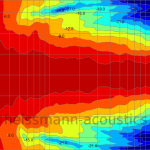MRC01
Major Contributor
True. The only reason I got top dollar for the passive attenuator that I built was because I used fancy heavy aluminum knobs & case, connectors, switches, etc. So it looked as good as it performed, a hand-crafted heavy chunk of audiophilia. And I found a savvy buyer. OTOH, the phono head amp that I built wasn't as fancy. I used an aluminum case & switches from Radio Shack, batteries from Tower Hobbies. This saved me money and didn't affect performance; it was at least as good as the best head amps that Amir has measured here. But it sold for less than the cost of the parts. That's fine with me, I got 15 years of use out of it and am glad another audiophile is enjoying it.You also have to remember that looking good matters. Performance aside, the aesthetics matter a lot. If it does not look good, parting out is likely the endgame. I've been there a few times.
...
The buyer has to be savvy enough to know they are getting a quality built product, that performs well for a comparable to commercial valued price. ...
I still encourage DIY because it's educational and fun, with great satisfaction in listening to gear you built yourself. But for the majority of us who do this as a hobby rather than as a profession, don't expect what you build to have resale value - don't do it for the money.


